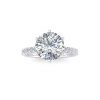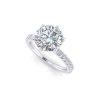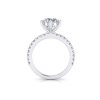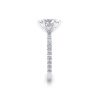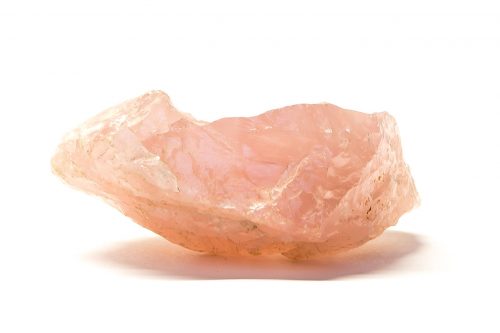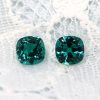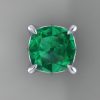Happy Stories From our customers
Read testimonials-
-
T.T. 6 Prong Engagement Ring
-
B.H. Channel Set Engagement Ring Re Make
-
Can Gems Communicate with You?
Before you go running for the hills, thinking this is some New-Agey post, think about it a second:
Everything and everyone possesses a frequency of some sort. Just because you see it doesn’t mean it doesn’t exist. Think of when you walk by a radio with a cellphone in your hand; chances are, you’ve heard a buzzing noise emit from the speakers. That’s the phone talking to the tower and the speakers picking up that radio transmission.
So if you accept the fact that energy exists that you don’t see, consider the healing power of gemstones and crystals. For eons, humans have noted the power of gems and crystals and have used them for healing and protection, among other things.
What does that mean for you, jeweler lover? Well consider your favorite gem. How does it make you feel? Do you feel a sense of safety and protection while wearing it? Entertain the fact that there’s a chance that gem resonates particularly with you.
Take rose quartz, for example. According to MBGMindfulness:
Rose quartz is a stone of unconditional love that helps to open and heal the energy of the heart. It encourages the forgiveness of others and, most importantly, of yourself. The secret to finding true love is to love yourself. Rose quartz emits vibrations of love, beauty and compassion. It’s a feel-good stone that nurtures, supports and allows you to feel the most powerful energy in the universe: LOVE.
So take a moment to research the spiritual implications of your favorite gem, if for no other reason than its fun!
-
What is a basket (in jewelry terms)?
We get it. Sometimes the terms in the custom design jewelry world get a little confusing. (We see the glazed over look when customers don’t understand the words we use so casually!)
A recent client asked: “What’s a basket?”
Jewelry education to the rescue!
A basket head holds the center stone in place, usually with 4 or 6 prongs. The openings in the basket allow light to pass through the gem of your ring. (This provides more sparkle.) Practically speaking, the basket secures the stone and (when made correctly) provides comfortable wear.
Take a look at the video below. You’ll be able to easily identify the rose gold basket.
-
Cool, warm or neutral? (From a man’s perspective)
We’ve talked about skin tone a lot here on these pages. And for good reason. When you’re investing in custom design jewelry, the metals you choose really matter. You may love silver but gold might be the wiser choice when skin tone is at play.
Here, we get a detailed look at skin tone (from a male perspective). To us, its clear which metals work best on him. What do you think?
-
A.G. Cushion Shape Halo with Round Center
-
K.M. Pave Knife Edge Wedding Band
-
A.W. Custom Made Men’s Yellow Sapphire Ring
- Version 1
- Version 2
With decorative back
-
J.M. Old Mine Cut Emerald Earrings






